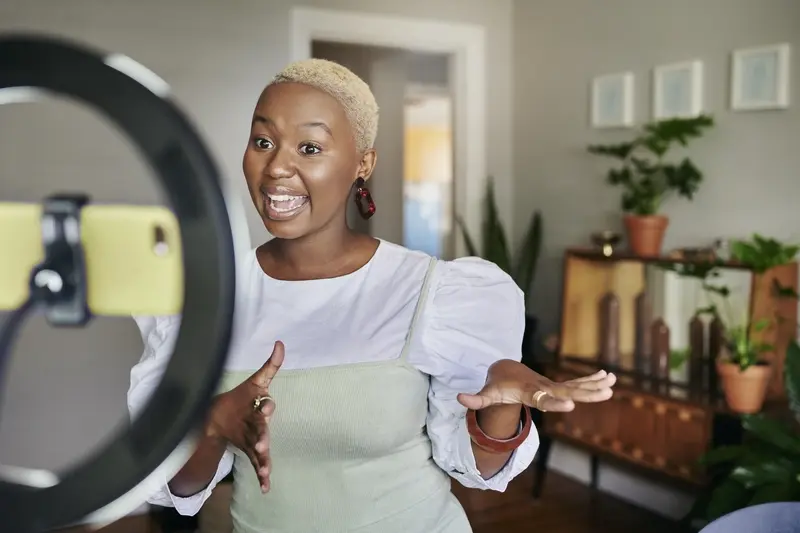How Do You Find Your First 1000 App Users Without a Budget?
Finding your first thousand app users when you've got zero marketing budget? It's one of the biggest challenges I see new app creators face, and honestly, it can feel pretty overwhelming when you're staring at download numbers that haven't moved past single digits for weeks.
I've been there myself—watching other apps seemingly explode overnight while yours sits in the app store collecting digital dust. But here's what I've learned after years of building apps and helping clients grow their user base from scratch: you don't actually need a massive marketing budget to find your first 1000 users. What you need is creativity, persistence, and a willingness to put yourself out there in ways that might feel uncomfortable at first.
The thing is, most people approach user acquisition backwards. They build their app, launch it, then start thinking about how to get people to download it. That's like opening a restaurant in the middle of nowhere and hoping people will just stumble across it. The most successful app launches I've been part of started building their audience long before the app was even finished.
The best time to start finding your first users isn't after you launch—it's the moment you decide to build your app
What we're going to cover in this guide are the exact strategies that work when you're starting from zero. No paid advertising, no influencer budgets, no fancy PR agencies. Just practical, tested methods that you can start using today to build genuine interest in your app and convert that interest into downloads, active users, and eventually, loyal fans who'll help spread the word for you.
Start with Your Network and Personal Contacts
Right, let's get real here. When you're starting out with zero budget, your first port of call isn't some fancy marketing agency or expensive ad campaign—its the people who already know and trust you. I've watched countless clients overthink this step, but honestly? Your personal network is often your biggest asset when launching an app.
Think about it this way: these people already believe in you as a person, which means they're more likely to give your app a proper chance rather than just downloading it and forgetting about it. Plus, they'll actually tell you the truth about what's broken or confusing, which is gold dust in those early days.
Who Should You Reach Out To?
Start by making a proper list—and I mean write it down, don't just keep it in your head. Include family members, friends, work colleagues, university mates, people from your gym or hobby groups. You know what? Even that person you chat to whilst walking the dog counts. Cast the net wide here.
- Family and close friends (they'll download it just to support you)
- Professional contacts and colleagues
- University or school connections
- People from clubs, sports teams, or hobby groups
- Social media connections who actually engage with your posts
- Former colleagues and business contacts
How to Ask Without Being Pushy
Here's where most people mess up—they either don't ask at all because they feel awkward, or they send some generic message that sounds like spam. The trick is being genuine about what you need. Don't just say "download my app"; explain that you're looking for honest feedback and that their opinion matters to you. Most people are happy to help when they understand they're contributing to something meaningful rather than just boosting your download numbers.
Build in Public on Social Media Platforms
Building in public is one of the most powerful—and completely free—ways to attract your first users. I've watched countless app developers transform from unknown creators to recognised names in their space simply by sharing their journey openly on social media platforms.
The concept is simple: document your app development process, share your wins and failures, and let people follow along as you build. But here's what most people get wrong—they think building in public means posting screenshots of code or boring progress updates. That's not it at all.
What actually works is sharing the story behind your decisions. Why did you choose that particular feature? What problem did you discover during user testing? How did you solve that tricky technical challenge? People love behind-the-scenes content because it makes them feel part of something bigger.
Twitter and LinkedIn work brilliantly for this. I've seen developers gain thousands of followers by tweeting daily updates about their app development process. Instagram and TikTok can work too, especially if your app has a visual component or you're comfortable on camera.
What to Share Without Giving Away Your Secrets
Share your thought process, not your proprietary algorithms. Talk about user feedback you received and how it changed your approach. Show mockups and design iterations. Discuss the tools you're using and why. Document your user research findings (without revealing sensitive data, obviously).
The magic happens when people start commenting, sharing their own experiences, and offering suggestions. Suddenly, you've got a community of invested followers who are genuinely excited to try your app when it launches.
Post consistently but don't overwhelm your audience—3-4 updates per week is perfect. Always end your posts with a question to encourage engagement and build genuine conversations around your app development journey.
Create Content That Actually Helps People
You know what? This is where most people get it completely wrong. They think creating content means posting endless selfies with motivational quotes or sharing random thoughts about their morning coffee. But here's the thing—if you want to attract your first 1000 users without spending a penny, your content needs to actually solve problems for people.
I've seen app founders create blog posts, videos, and social media content that directly addresses the pain points their app solves. Let's say you've built a budgeting app; instead of just posting "our app helps you save money!" you could create genuinely useful content like "How to track your spending using just your phone's notes app" or "Five bank fees you're probably paying without realising it."
Focus on Teaching, Not Selling
The best content I've seen from successful app launches doesn't even mention the app half the time. It just helps people solve real problems. When you teach someone something valuable, they remember you. And when they have that problem again (or their friends do), guess who they think of first?
Start by listing the top ten questions your potential users ask. Then create content that answers each one properly—no fluff, no sales pitch, just genuine help. Write blog posts, record quick videos on your phone, or even just create detailed Twitter threads. The format doesn't matter as much as the value you're providing.
Make It Easy to Find and Share
Actually, there's a smart trick here. End each piece of helpful content with something like "If this helped you, feel free to share it with anyone else who might need it." People love sharing genuinely useful stuff—it makes them look good to their friends and colleagues. That's how your content starts spreading naturally, bringing potential users back to you without any advertising spend.
Partner with Other Apps and Businesses
You know what? One of the smartest moves I've seen founders make is teaming up with other apps that serve similar users but aren't direct competitors. It's basically a win-win situation—you both get access to each other's audiences without spending a penny on ads.
Think about it this way: if you've built a fitness tracking app, partnering with a meal planning app makes perfect sense. Your users probably care about nutrition too, and their users likely want to track their workouts. I've watched apps grow from hundreds to thousands of users just by doing simple integration partnerships like this.
Cross-Promotion That Actually Works
The key is finding businesses where there's natural overlap but no competition. Local businesses work really well for this—coffee shops, gyms, bookstores, you name it. Offer them something valuable in return for promoting your app to their customers. Maybe it's a special feature, exclusive content, or just reciprocal promotion on your social channels.
One approach that works brilliantly is creating joint content or challenges. Partner with another app to run a month-long challenge that requires both apps to complete. Users download both, you share the marketing effort, and everyone benefits from the increased engagement.
The best partnerships feel natural to users—they should wonder why the apps weren't working together from the start
Don't overthink this—reach out to other founders directly. Most of us are in the same boat, trying to grow our user base on limited budgets. A simple email explaining how a partnership could benefit both sides often leads to genuine collaborations. Start small with a single cross-promotion post and see how it performs before committing to bigger joint ventures.
Online communities are where your potential users hang out, ask questions, and look for solutions. But here's the thing—most people get this completely wrong. They jump into Reddit or Discord, spam their app link, then wonder why they got banned faster than you can say "self-promotion."
I've seen this mistake countless times over the years. People think community marketing means posting about their app everywhere. Actually, it's the opposite. The best community marketing doesn't feel like marketing at all.
Find the Right Communities
Start by thinking about where your users spend time online. If you've built a fitness app, look for health and workout subreddits, Facebook groups for runners, or Discord servers for gym enthusiasts. Don't just join the biggest communities; smaller, more engaged groups often work better for getting genuine feedback and early adopters.
Make a list of 5-10 communities where your target users are active:
- Reddit subreddits related to your app's niche
- Facebook groups in your industry
- Discord servers for your target audience
- Specialised forums and message boards
- LinkedIn groups for professional apps
Become a Helpful Member First
Here's what actually works: spend weeks just helping people. Answer questions. Share useful resources. Give genuine advice. Don't mention your app at all during this phase.
Once you've built some credibility and people recognise your username, then you can occasionally share your app—but only when it genuinely solves someone's specific problem. The key is to be helpful first, promotional second. Most communities have rules about self-promotion anyway, so read them carefully and follow the guidelines.
When you do share your app, frame it as "I built this because I had the same problem" rather than "check out my awesome app." People respond much better to authentic stories than sales pitches.
Use App Store Optimisation to Get Found
Right, lets talk about something that can genuinely make or break your app's chances of being discovered—App Store Optimisation, or ASO as we call it in the business. Think of it as SEO for your app listing; its about making sure people can actually find your app when they're searching for solutions you provide.
Your app name and subtitle are absolutely crucial here. I've seen brilliant apps with terrible names that nobody could find, and its heartbreaking really. You want your app name to include keywords people might search for, but don't make it sound like keyword spam. A finance tracking app called "MoneyWise - Budget Tracker & Expense Manager" will perform much better than just "MoneyWise" because people search for "budget tracker" and "expense manager" terms.
Your app description needs to work harder than you might think. The first few lines are what people see without expanding the full description, so make them count. Include your main keywords naturally—don't just stuff them in there like you're playing keyword bingo.
Key ASO Elements That Drive Downloads
- App icon that stands out in search results and category browsing
- Screenshots that show your apps value within 3 seconds of viewing
- Keyword research using tools like App Annie or Sensor Tower
- Regular updates to keep your app fresh in store algorithms
- Localisation for different markets and languages
Update your app listing every 4-6 weeks with new screenshots, refined descriptions, or keyword tweaks. Fresh content signals to app stores that your app is actively maintained, which can boost your search rankings organically.
Reviews and ratings have a massive impact on your ASO performance too. Apps with higher ratings get better visibility in search results—its just how the algorithms work. But here's the thing: you need to actively ask for reviews at the right moment, like after a user completes a successful action in your app. Understanding how app category affects your search rankings can also help you position your app more effectively in the stores.
Turn Early Users into Your Marketing Team
Here's something most developers get wrong—they think user acquisition ends once someone downloads their app. But actually, that's where the real opportunity begins. Your early users are pure gold if you know how to work with them properly.
I've seen apps grow from a few hundred users to tens of thousands simply by turning their existing users into advocates. The key is making it stupidly easy for people to share your app and giving them genuine reasons to do so.
Make Sharing Feel Natural
Don't just stick a "share" button somewhere and hope for the best. Build sharing into the core experience of your app. If it's a fitness app, let users share their achievements. If its a productivity tool, make it simple to collaborate with others. The sharing should feel like a natural extension of what they're already doing.
One client of mine built a recipe app and added a feature where users could create shopping lists to share with family members. That single feature drove more downloads than any paid advertising we tried—because it solved a real problem whilst naturally introducing new users to the app.
Reward Your Biggest Fans
Find the users who genuinely love your app and give them special treatment. This might be early access to new features, direct communication with your team, or even simple recognition within the app itself.
These super-users will become your unofficial marketing team, answering questions in app store reviews, recommending your app in online discussions, and providing feedback that helps you improve. They're worth their weight in gold, so treat them accordingly.
The best part? This approach costs nothing except your time and attention. But the impact on your user growth can be massive.
Track What Works and Double Down
Right, here's where most people mess up—they try loads of different things to get users but never actually track what's working. It's mental really, because without proper tracking you're basically throwing ideas at a wall and hoping something sticks. And trust me, that approach will drain your energy faster than trying to charge an iPhone with a potato.
I've worked with countless app founders who come to me saying "we tried everything and nothing worked." But when I dig deeper, they cant tell me which marketing efforts brought in their best users or which channels had the highest retention rates. They were busy being busy instead of being smart about it.
Set up basic analytics from day one. Google Analytics for Firebase is free and gives you proper insight into user behaviour—where they're coming from, what they're doing in your app, when they're dropping off. Don't get fancy with expensive tools yet; just track the basics consistently.
Focus on Quality Metrics
Downloads are nice for your ego, but they don't pay the bills. Track retention rates, user engagement, and which acquisition channels bring users who actually stick around. A hundred users who love your app are worth more than a thousand who delete it after one session.
The data will tell you stories your assumptions never could—listen to what your users are actually doing, not what you think they should be doing
Once you identify what's working—maybe it's that Reddit community that keeps sending engaged users, or those blog posts that convert really well—double down hard on those channels. Stop spreading yourself thin across twenty different marketing tactics and focus your limited time on the two or three things that actually move the needle for your specific app.
Conclusion
Getting your first 1000 users without spending money isn't just possible—it's actually the best way to build a solid foundation for your app. I've seen too many apps fail because their creators threw money at user acquisition before understanding what their users really wanted. By doing the hard work upfront, you're setting yourself up for long-term success.
The methods we've covered aren't just free; they're fundamentally about building real relationships with your users. When you start with your network, engage authentically on social media, and create genuinely helpful content, you're not just acquiring users—you're building a community. These people become your biggest advocates because they feel connected to your journey.
Here's what I want you to remember: there's no magic button that gets you 1000 users overnight. But here's the thing—that's actually good news. The slow, methodical approach of engaging in communities, optimising your app store presence, and turning early users into champions creates something much more valuable than quick downloads. It builds trust and loyalty.
Don't try to do everything at once. Pick two or three strategies that feel most natural to you and your app's audience, then execute them consistently. Track your results obsessively; double down on what works and don't be afraid to abandon what doesn't. The data will tell you the truth, even when its uncomfortable.
Your first 1000 users are out there right now, probably struggling with the exact problem your app solves. They just don't know your solution exists yet. Go find them, help them, and watch your user base grow organically from there.
Share this
Subscribe To Our Learning Centre
You May Also Like
These Related Guides

How Do I Get My First 1,000 App Users?

What's The Best Way To Find Micro-Influencers For App Promotion?



